Written by So Ching Wong
The Frogbear Cluster 3.1 entitled “Multicultural Dunhuang: Manuscripts and Paintings” has come to its third year. This summer field trip took place in London from June 26 to 30, 2023. It was co-organized by Prof. Imre Galambos (University of Cambridge) and Prof. Michelle Wang (Georgetown University), with the aim of developing interdisciplinary research methods of examining Dunhuang collections, especially in the area of manuscripts and paintings, based at the British Library and the British Museum.
A group of eight students selected from various institutions worldwide, including UC Berkeley, China Jiliang University, Durham University, University of Edinburgh, Ghent University, Inalco University (Institut national des langues et civilisations orientales), National University of Singapore, and Stanford University. The field visit comprised of three parts: a two-day workshop at the British Library (June 26–27, 2023), one-day lectures at the SOAS University of London (June 28, 2023), and a two-day workshop at the British Museum (June 29–30, 2023).
<All photographs included in this report are taken by So Ching Wong (unless otherwise specified) and granted with her permission for republishing.>
June 26, 2023
On the first day of the fieldtrip, all the participants gathered at the courtyard of the British Library for a brief orientation, self-introduction, and review of the code of conduct before meeting the British Library’s staff. The morning session was led by Ms. Mélodie Doumy, the Curator of Chinese Collections at the British Library, on the interplay between images and text. Ms. Doumy first gave a briefing about the IDP and emphasized the adjusted renaming of IDP from “International Dunhuang Project” to “International Dunhuang Programme.” She then introduced the handling and conservation of Dunhuang material that led to a short discussion about balancing the accessibility of physical materials and keeping them online for conservation.
Francesca Berdin (Inalco University) then brought into a discussion about the banners of stone inscriptions. It was interesting to discuss the function of the banner, the patterns inside the Chinese characters, and how they were used. Participants then separated into different groups to look at other Dunhuang materials, and they paid much attention to a sutra written into the shape of a pagoda that used red dots for reading sequence. They were also fascinated by a Chinese mandala with strong Tibetan influences.
The afternoon session was held by Dr. Sam van Schaik, Head of the Endangered Archives Programme at the British Library, on the tantric ritual implements in the Stein Collection at the British Library. It was divided into two parts, Wen Hui (Ghent University) first talked about her research topic, Three Hares motif, and made two points about this motif: first, the symbolic meaning of the three rabbits with three ears in total, but each look like two; and second, the spread of this the circular motif which appeared in sites from East Asia, the Middle East and even further to Europe. A manuscript about dream analysis on dreaming rabbits elicited further discussions. The second part of the session was about book formatting, there were five examples of materials, including three pothis which show an example of a Tibetan pothi (IOL San 1492), a Chinese localized papered pothi (S. 5603), and a Tibetan pothi made of unused Chinese paper (IOL Tib J 401).

(Figure 1) Students studying the calligraphy of a Dunhuang banner with Ms. Doumy, Dr. van Schaik, and Prof. Wang at the British Library.
June 27, 2023
The second day was the continuation of the study of Dunhuang manuscripts, and Prof. Galambos introduced calligraphy and handwritings styles. He explained that calligraphy in the fifth century was thicker because it was influenced by the stone inscription style. He also reminded us that the writing style we see today might not be the actual style as current research mainly depends on the surviving content we could now see. There was an interesting example of a manuscript written during the regime of Empress Wu Zetian 武則天 (r. 690–704) (S.6502) in which unique Chinese characters could be seen. They could also be found in a much later period as they became popular in Japan, and even after a few hundred years in Dali Kingdom 大理國 (937–1253). Last but not least, Prof. Galambos told us the number of Chinese characters written in a column is also helpful in the consideration of dating. There were around nineteen characters in each column during pre-Tang period, while the format was standardized to seventeen per column in Tang 唐 (618–907). Yuxuan Tay (National University of Singapore) later shared his master thesis research regarding “the imperial prefaces of Buddhist Canon” (yuzhi Dazangjing xuba 御制大藏經序跋) which discussed copyists of the emperor’s prefaces.
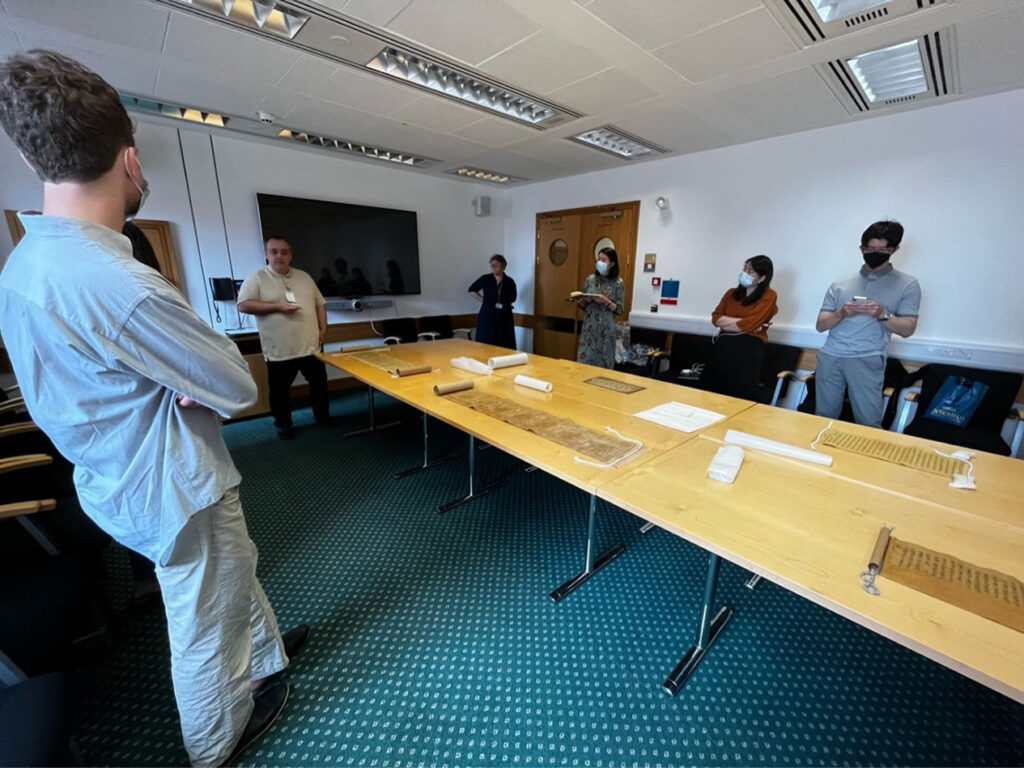
(Figure 2) Prof. Galambos giving an introduction about Dunhuang calligraphy and handwritings styles at the British Library.
Prof. Costantino Moretti (École française d’Extrême-Orient) was invited to share his research on scribal markers in the afternoon. He used a sutra manuscript (S.5309) as an example to interpret the usage of lotus motif and dots which may represent the hierarchy of the text. He also shared the Japanese research on dry-point glosses in the manuscript. Moreover, he gave examples of different scribal symbols when writing the texts, such as deletion marks, reverse marks, and ditto marks. The latter part of the session was led by Yanxi Luo (University of Edinburgh) who introduced two Taoist manuscripts. The first manuscript (S.2295) titled, Laozi bianhua jing 老子變化經 (Sutra of the Incarnations of Laozi), was copied by Xuandao 玄道 during 612 CE. This manuscript mentioned the birth of Laozi 老子, described nine of his different forms, and showed how he became a deity. The second manuscript (S.2942) was the only copy of the commentary of Tao. Interestingly, while the commentary was written during the sixth century, there were also other texts at the back written later in tenth century.
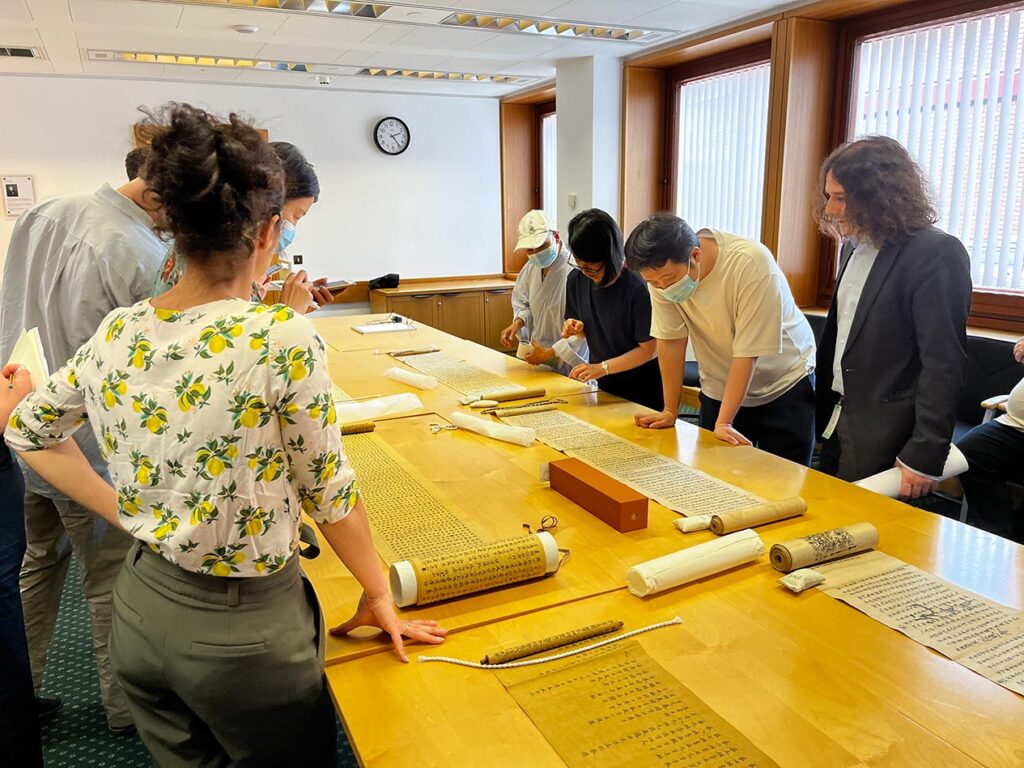
(Figure 3) Prof. Moretti guiding students on how to identify scribal symbols in Dunhuang manuscripts at the British Library.
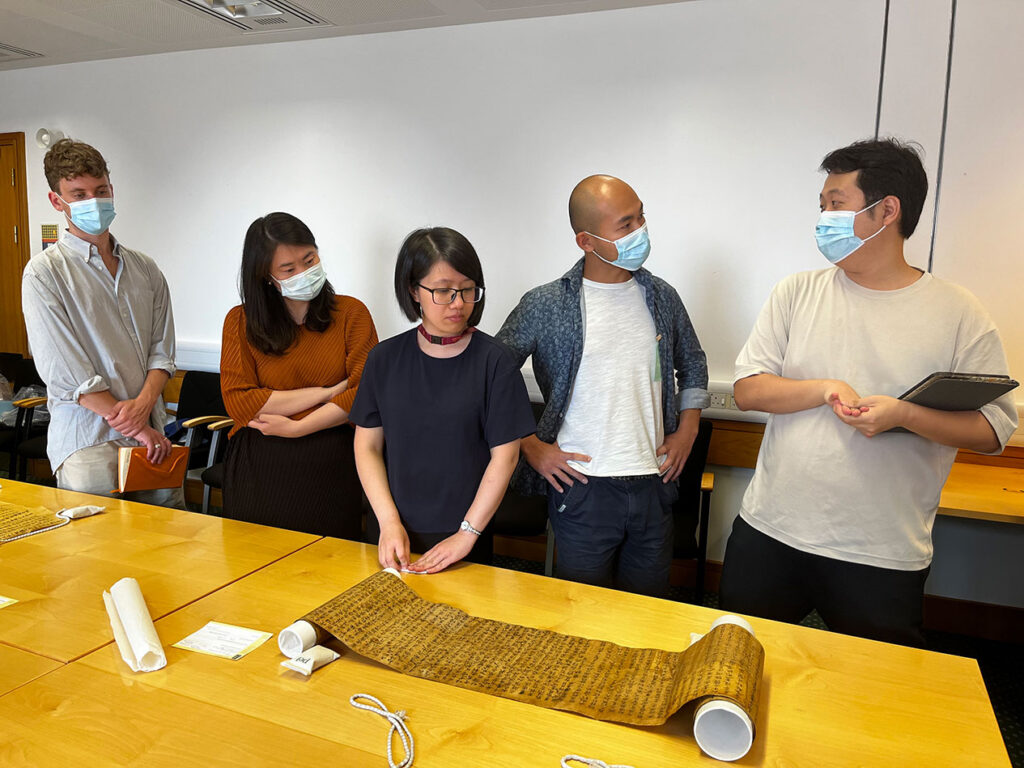
(Figure 4) Students discussing a Dunhuang manuscript at the British Library.
June 28, 2023
The third day comprised of eight lectures on different Dunhuang Studies research. The morning session was devoted to Chinese manuscripts, which also wrapped up the study in the last two days. Prof. Galambos started by giving a lecture about manuscripts from a wider methodological perspective. To study Dunhuang, he suggested that we should not only look at collections in Chinese, but consider transcultural dimensions, for some important findings may be found in other languages. He proposed a re-thinking and interpretation of changes in manuscripts. Following Prof. Galambos’ lecture, Dr. van Schaik reflected on the functions of Tibetan manuscripts. He emphasized the importance of studying manuscripts in a comprehensive way and linked it to the study of a pottery production which included processes of production, usage, and deposit. He gave examples on different kinds of findings on Tibetan manuscripts such as changes of text through transmission, addition of notes for personal study, and Chan Buddhism rituals. Ms. Doumy then shared her experience in studying the processes of production, usage, deposit, and post-discovery of manuscripts. She addressed being acutely aware of the tactile features of physical manuscripts. These features included human fingerprints, paper’s compositions, traces of ink from the brush when writing the manuscripts, process of people adding different texts, burnt marks during general usage of manuscript, physical damage after the deposit of the manuscripts, and even evidence of human handling during post-discovery, all of which tells unique stories about the manuscripts. Prof. Moretti concluded the morning session by lecturing on the scribal errors that appeared in the Dunhuang manuscripts. He outlined examples of intentional and unintentional mistakes that occurred during the writing of a manuscript and explained some formal variants like alteration of page layout or modification of text layout.
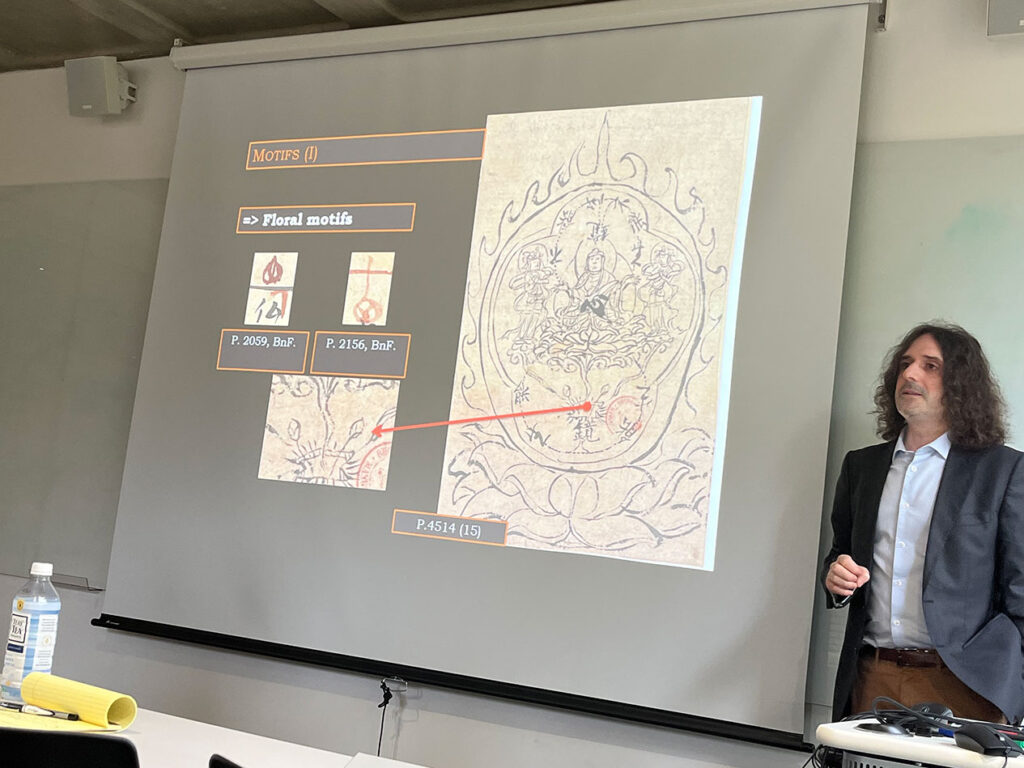
(Figure 5) Prof. Moretti showing the floral motifs in Dunhuang manuscripts.
The afternoon session was about Dunhuang imageries and materials. Prof. Wang started her presentation titled “Word and Image, Materials and Materiality.” She first introduced approaches to the study of Dunhuang paintings for a general concept on what information we could learn from the materials. She also addressed the ‘multicultural’ aspect of our cluster research theme as Dunhuang was a vibrant epicentre for long distance cross-cultural exchange and trade. Finally, she concluded her lecture by explaining Dunhuang materials and materiality. Prof. Susan Whitfield (Sainsbury Institute for the Study of Japanese Arts and Cultures) then introduced her research in the reconstruction of Buddhist landscapes in Dunhuang, Khotan, and Barikot. Students were fascinated to learn more about Central Asia, especially when Prof. Whitfield talked about Buddhist remains in Swat Valley, Pakistan. Following Prof. Whitfield’s research, Dr. Yu-ping Luk, the Basil Gray Curator at the British Museum, shared donor images and inscriptions collected in the British Museum. She reminded us that donor figures may seem secondary, but they are significant in learning how the communities or the clans were involved in Dunhuang activities. Dr. Diego Tamburini, Polymeric and Modern Organic Materials Scientist in the British Museum, ended the session by showing us scientific analysis of Dunhuang textiles and dyes. He used simple language to explain methods and approaches of the dye project that had started in 2017. The students were interested to know his new findings and the new perspective of the chemist approach in Dunhuang textile research.

(Figure 6) Dr. Luk sharing donor images and inscriptions collected in the British Museum.
June 29, 2023
It was a two-day field trip to the British Museum. The morning session of the first day started with a short viewing at China and South Asia Gallery for Stein collection on display. Prof. Wang gave an introduction on Chinese Silk Road artefacts. Later, the group visited Hirayama Studio to meet Mrs. Qiu Jinxian 邱錦仙, Dunhuang painting conservator at the British Museum, and her assistant Valentina Marabini. Mrs. Qiu and Ms. Marabini introduced the ideas and procedures of conserving Chinese paintings, and shared the techniques applied by Japanese and Western conservators. Students were captivated by the techniques and outcomes of the conservation demonstrations.
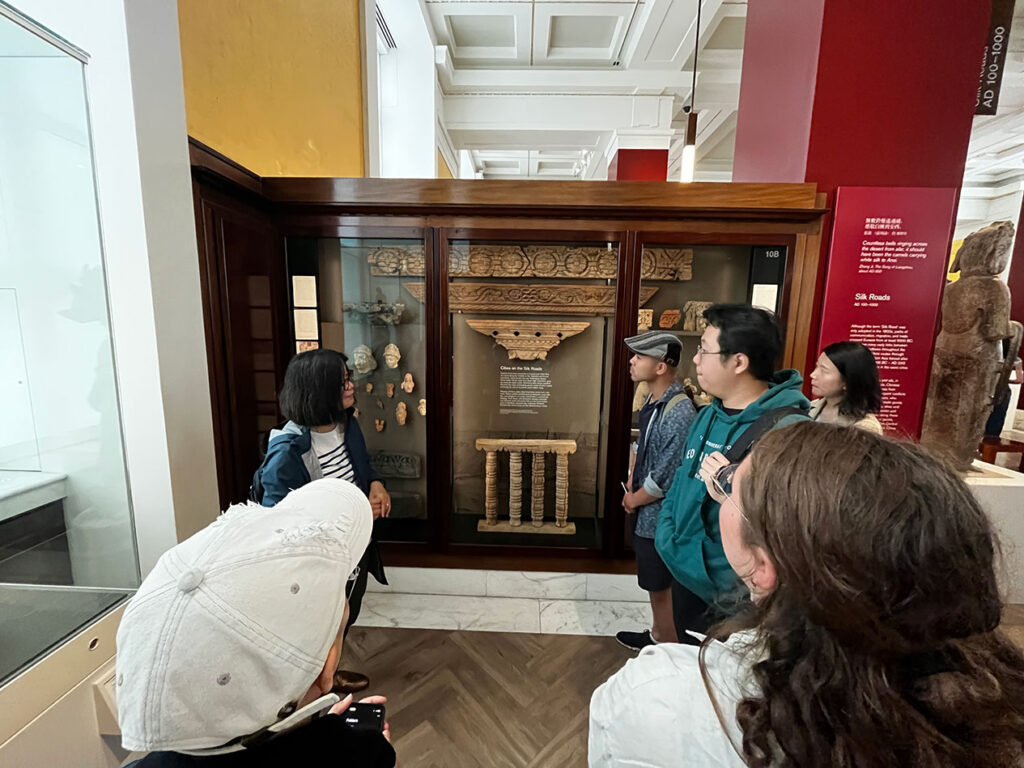
(Figure 7) Prof. Wang introducing Stein collection on display at the British Museum.
The afternoon session was divided into two parts. First, Dr. Tamburini presented different textile dyes and explained their sources. He showed the possibility of the presence of different colors of a dye, explaining that a same source of fragments can produce different colors due to difference in pH value. He outlined the cautiousness when looking at the current color as the original color may not look the same as what we could see in modern days. He showed an example of a textile which appeared orange in the front, but the color is actually red at the back. Dr. Tamburini ended the first part by showing textiles under the UV light and explained that light reflection could also be a way to trace the dye. Dr. Tamburini then brought students to different laboratories to show the practical work of the museum scientists. The students enjoyed visiting different laboratories including Technical Imaging Laboratory, Radiographic Laboratory, and Organic Material Laboratory.
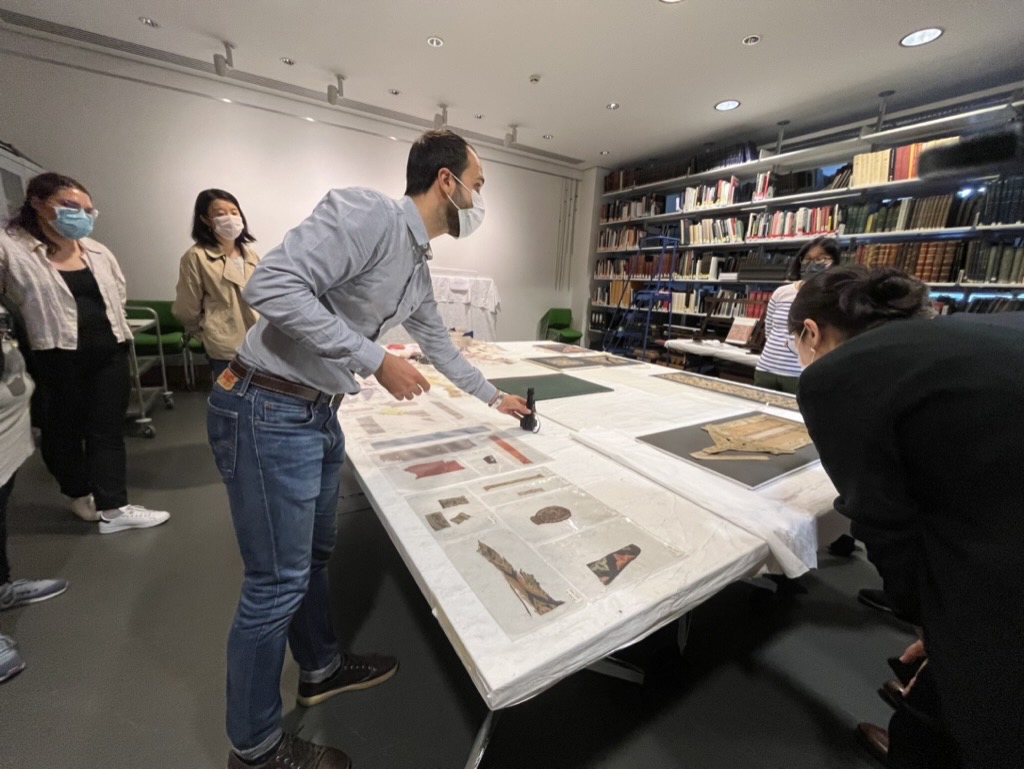
(Figure 8) Dr. Tamburini showing different dyes of the Dunhuang textiles at the British Museum.
June 30, 2023
The final day began with re-visiting the China and South Asia Gallery. Prof. Wang brought the students to the exhibition of Amaravati, one of the most important Buddhist sites in India beginning in third century BCE. She introduced few Buddhist scenes of the Amaravati sculptures and explained how these marbles were placed in the original architecture. Later, all students assembled in the Asia study room to examine Buddhist paintings with identified donors that were shown in Dr. Luk’s lecture on Wednesday. Students split into small groups to discuss the paintings, and were excited to see the physical items up close. They looked into the manuscript and analyzed the reasons for making donor paintings, for examples, praying for deceased ancestors or family members (1919,0101,0.54 and 1919,0101,0.14), and hoping for long life or wealth (1919,0101,0.27 and 1919,0101,0.242). They are also thrilled to learn the scale of donating is not only limited to a single person’s patronage nor just Chinese nationality, but also the whole tribe and foreigners.
After lunch, students went back to the Asia study room for Tibetan and Khotanese materials. Students were also separated into groups to study the paintings. Students were most interested in a pothi painted with both Chinese and Khotanese inscriptions that contained a dream analysis when one dreams of female demons. The programme ended with personal visit to other exhibitions in the British Museum. Some students went to the special exhibitions, and some listened to a tutorial guide given by Dr. Wang Jun regarding Gandhara period Buddhism. After the visit, students all gathered for a farewell dinner where they could share their thoughts on the programme and expressed their gratitude for the workshop. They all learnt and developed new theories and methodologies applications, and concluded that this was a valuable experience in examining physical materials.
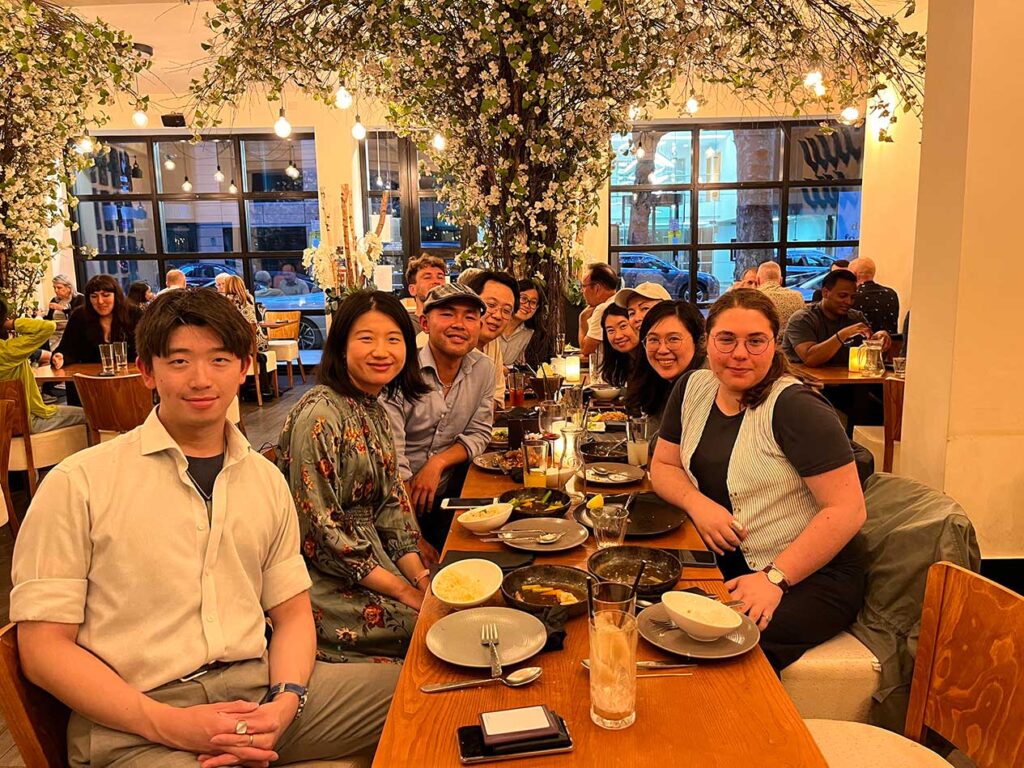
(Figure 9) Group photo taken by a helpful waiter in the farewell dinner.
Sharings from Student Participants
- Francesca Berdin (Inalco University)
This workshop has been an enriching and valuable experience. It has been interesting and eye-opening to understand the life of Dunhuang manuscripts and paintings through the different traces left by their creators and their users. It was fascinating to discover the multicultural background, the practices and the variety of the techniques that brought to life such manuscripts. I would like to thank Professor Galambos and Professor Wang for this opportunity as well as all the scholars who have shared their knowledge.
- Julian Butterfield (Stanford University)
I had only ever accessed Dunhuang manuscripts and paintings in digital form, and while I had a theoretical outline for appreciating the material, codicological elements of these documents, working with them in person opened the human history of Dunhuang up to me in ways I couldn’t have anticipated. Professors Wang and Galambos, along with our many guest speakers and guides, initiated us into the current state of Dunhuang Studies, training us to work sensitively and rigorously with the artifacts, and encouraging future collaborations, within and across disciplines. I couldn’t have hoped for a more effective program.
- So Ching Wong (Durham University)
I am thrilled to join this intensive workshop, I would like to thank Professor Galambos, Professor Wang for organizing such an invaluable cluster. The combination of both manuscript study and art historic methods of Dunhuang materials offer me a multi-disciplinary approach on dealing with both textual and visual materials. I have delved deep into various topics of Dunhuang Studies and learnt from esteemed scholars in the field, which could further strengthen methodology, raise my awareness in examining research materials and help me in finding interesting research questions.
- Wang Jun (China Jiliang University)
Thanks to this training programme, I was able to visualize the Dunhuang manuscripts and scrolls. I had never paid much attention to the way they were written, the paper and other material carriers before, and this training has opened up my research ideas. In particular, the systematic explanation of the revision symbols in the Dunhuang manuscripts has helped me to understand how the ancient scripture writers kept their scrolls neat and tidy, and it is very helpful for the patching up and collation of the fragmentary manuscripts as well as for the textual collation.
- Weiyu Lin (UC Berkley)
This five-day workshop has profoundly reshaped my understanding of manuscripts. Firstly, this workshop brought together specialists in Chinese Paleography, Tibetan Buddhism, Khotanese art, Central Asian archaeology, and other cultural traditions, each introducing me to a novel cultural facet that collectively constitutes Dunhuang culture. Secondly, this workshop has made me realize the crucial role the physicality of manuscripts and paintings plays in interpreting the associated text and art. It helped me consider manuscripts not merely as mediums, but as entities intertwined with the content and the unseen socio-cultural context of the period. This intimate exposure to such a large number of manuscripts under the tutelage of numerous specialists is truly a privilege. I consider it a significant milestone in my budding academic career.
- Wen Hui (Ghent University)
For me, this workshop is an unforgettable and inspiring experience, and I’m extremely grateful for the opportunity to learn from Prof. Galambos and Prof. Wang about reading, examining, and assessing the Dunhuang manuscripts and paintings. The interdisciplinary approach of studying the first-hand materials opened my eyes and broadened my horizons. I was also fascinated by how fragments are examined and discovered, and that rich stories and information could be revealed from everything hidden within the materials. The knowledge and insights I’ve gained during this training will undoubtedly continue to shape and enrich my journey in Dunhuang Studies.
- Yanxi Luo (University of Edinburgh)
This workshop is a wonderful introduction for me to gain a better understanding of Dunhuang Studies. It allows me for the first time to observe objects and consider their functions, audience, and the larger social context beyond central China. I am fully motivated and encouraged by the objects we have seen and the research that we have discussed. It certainly opens new paths for my further research.
- Yuxuan Tay (National University of Singapore)
The biggest takeaway from this cluster meeting was learning about new perspectives and research approaches revolving around Dunhuang manuscripts from Dr. Imre Galambos, Dr. Michelle Wang, and an entire cast of librarians, scientists, and conservators. Importantly, it was a fun time conversing with fellow upcoming scholars in the field, receiving valuable advices and suggestions that would absolutely contribute to my current and future research.
Author Bio:
So Ching Wong is a Ph.D. student at the Department of Archaeology, Durham University. Her current research examines religion along the Southern Silk Road from the seventh to the thirteenth centuries by analyzing Buddhist remains in the Nanzhao and Dali Kingdoms. She is trained in Chinese and Southeast Asian archaeology with a specific interest in the trade routes that facilitated cultural exchange between China and the surrounding regions and how they enabled the spread of Buddhism and Buddhist material culture.
Click here for the original posting







